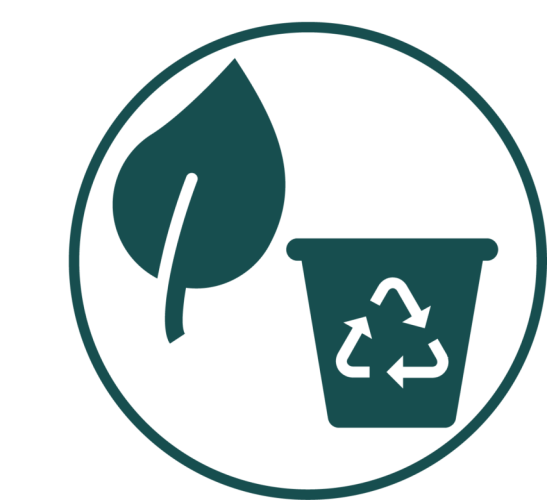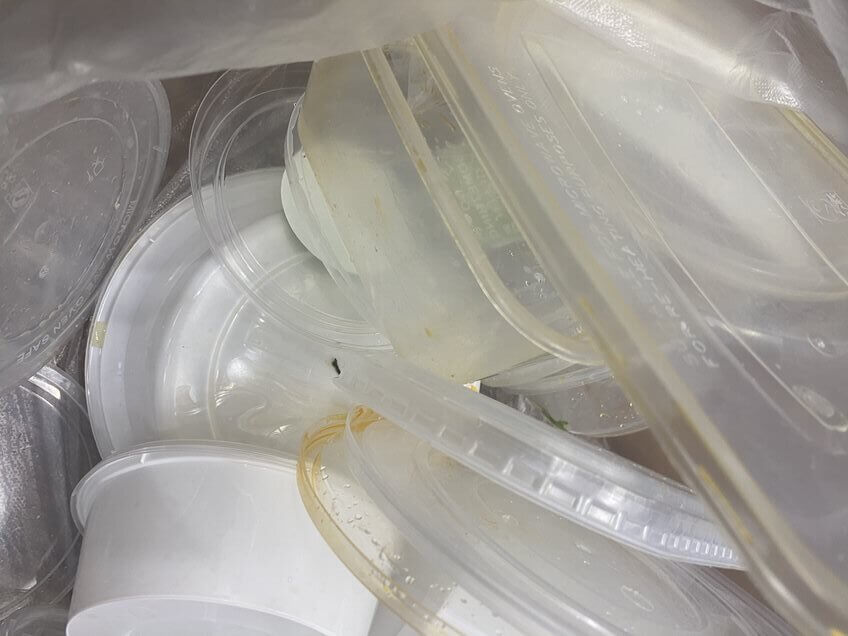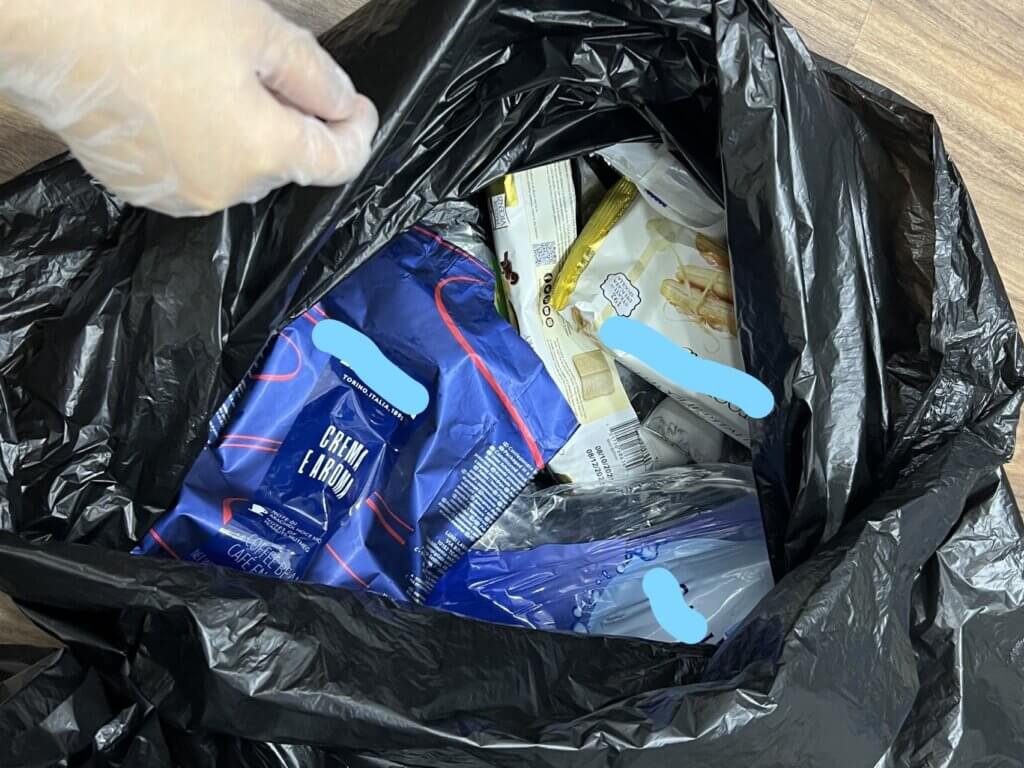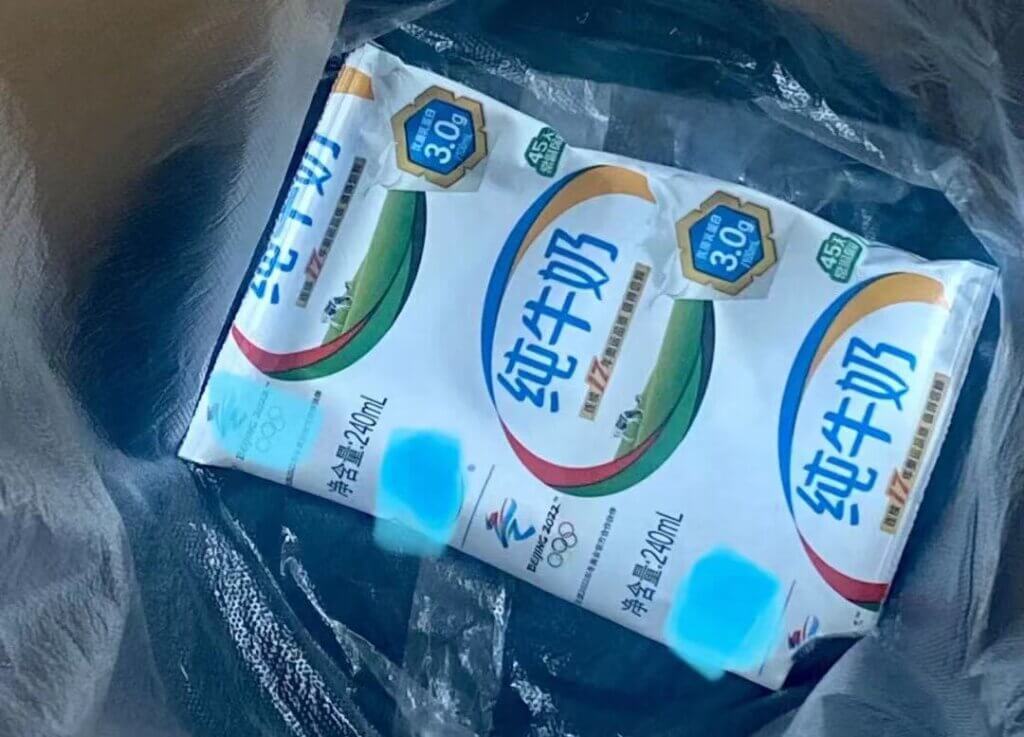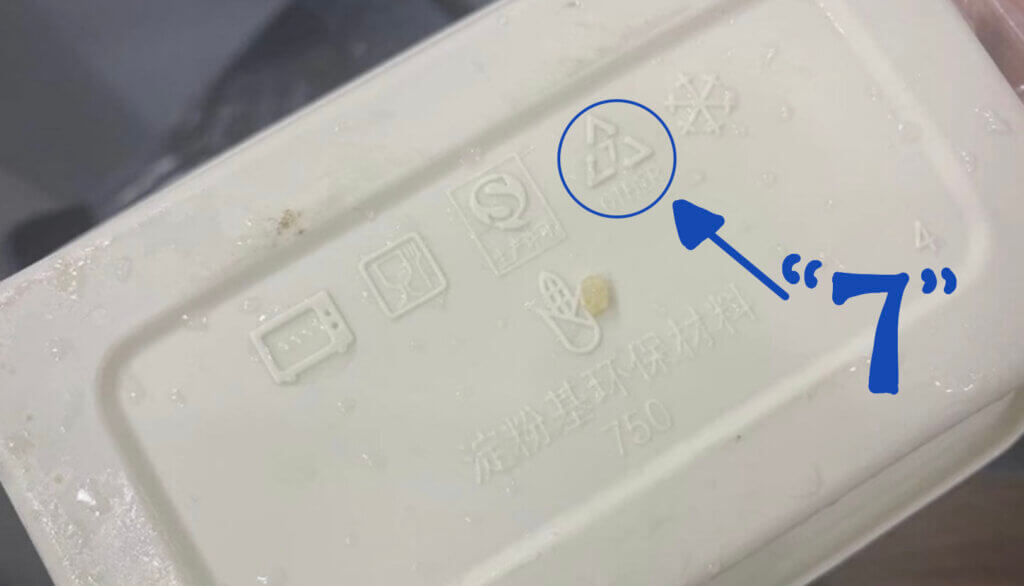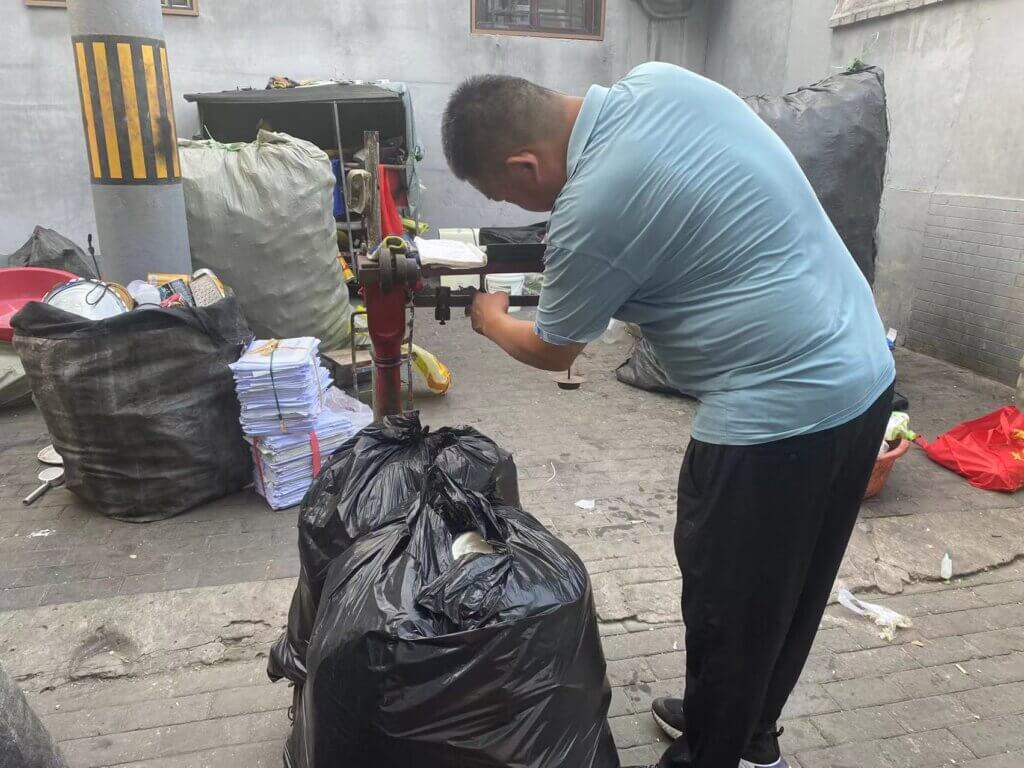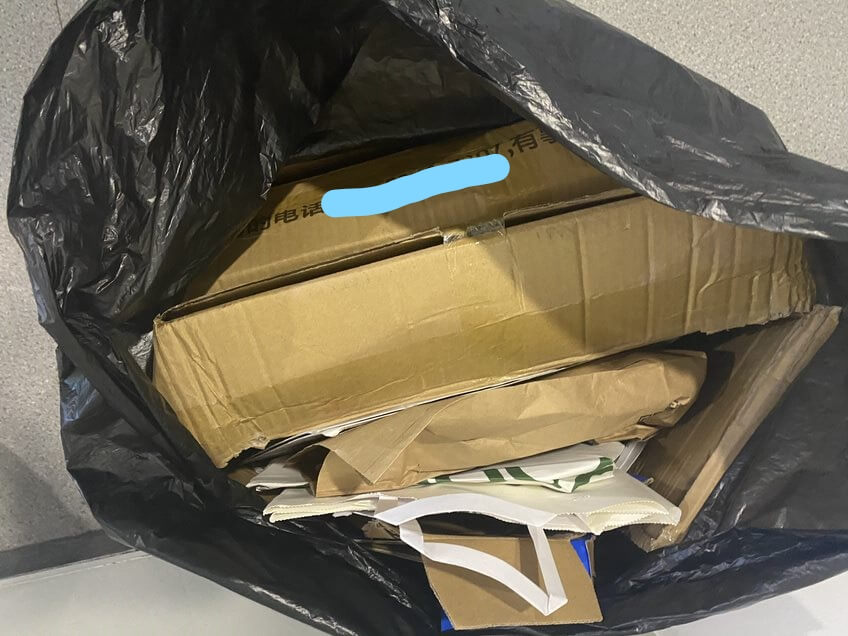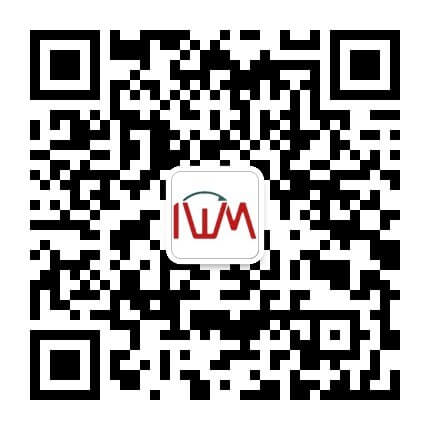Introduction
Accompanying controversy, plastic has become one of the most significant components in the office. Every day, each person in office would consume many plastic products, like coffee/milktea cups, takeaway packaging, and snack packs. Currently, a substantial amount of current plastic waste from the office only received treatment with climate concerns, such as incineration. Therefore, we started to experiment a new waste segregation system on the 5th floor offices, with 46 staff members and 586 square meters area, to evaluate the plastic consumption models in office premise and to analyze the economic and environmental feasibilities for recycling.
Report Content
On each day, approximately 6.9kg residual waste is generated from the office, among which 1.1kg is plastic waste. If we recycle all plastic waste, the waste that falls into the category of “other waste” would decrease to only 2.7kg, which means a reduction of 26%.
During the project, we paid extra attention on food delivery waste, which has contributed a lot to the usage of single-use plastic products, including food containers, milk-tea cups, and plastic bags. Currently, the average number of food delivery services used is 8.1 orders per day, which adds in an average of 90.1g plastic waste per order. Since a regular food container weighs 25-30 grams, each order would approximately use up 3-4 containers. Furthermore, 1.9kg of kitchen waste is recorded per day, in which not only consists of bones, inedible food remnants but also contains food waste due to excessive food ordering. Please keep in mind how much food you can eat when you are ordering!
Details into plastic waste analysis
Aiming to collect 100% plastic waste in office, we tried not to forget any tiny pieces of plastic. Let’s take a look at the composition and different kinds of common plastic waste in office.
The most “expensive plastic waste”: PET bottles
PET bottle in all plastic waste is like Michael Jackson in all singers, an absolute star. Even before we started to recycle all kinds of plastics in office. Ayi(our lovely cleaner) already recognized the value of PET bottles and collected them for a long time. In our following visit to two recycling points, PET bottles are always welcomed and have been offered great pricing.
The “hidden treasure”: takeaway packages
Other than commonly recognized “recyclable plastic”, we also collect low value plastic waste which includes food containers, plastic trays, coffee cups, and PS food package, mostly from using food delivery services. For an average day, we can collect roughly 896g of this plastic, which all presents high recyclability but received little attention to collect and recycle.
The most “difficult kind” of plastic waste to collect and recycle: PE films
Among all low value plastic waste, PE film is the most difficult kind to collect and recycle due to its complexity and tiny volume. It is the chameleon of plastic, which can be found in any colors and shapes. Most of times, a food package or a food plastic wrap would be as light as a feather and most of us never took a tiny piece of these plastic film seriously. However, bit by bit, our office alone accumulates 301g of PE films per day, in which 180g is white and translucent and 121g is in other colors. In office, most used PE films is from the food plastic wrap used to avoid leaking from takeaways, plastic bubble package wrap, and trash bags.
“Scattered pearls”: beverage boxes and HDPE bottles
What’s more, we found 2-3 beverage carton boxes, also called Tetra Park packs sometimes, used per day and only 1 HDPE bottle is found in three weeks, which is a bottle for yogurt. *HDPE bottles are normally used to hold cosmetics products.
”Naughty plastic”: “biodegradable plastic bags”
Eventually, we noticed many sellers use biodegradable plastic bags and containers but the types of them are complex and obscure in where and how to dispose, including “Gluten-based biodegradable containers” and other “biodegradable containers” that we encountered.
How about start recycling all plastics?
One of the effective approaches to increase overall recycling rate is to start recycling all plastic. Through this, taking our 5th floor office as an instance, the recycling rate would increase from 48.5% to 61.7%.
Where does this plastic go?
During this first period, we got to visit adjacent recycling points. For the first recycling point that we visited, like most recycling points, among all plastic waste, recyclers there only adopt PET bottles and milk-tea cups. For food containers and plastic films, even we washed them ahead and segregated only translucent containers which are easier to recycle, the recycler still couldn’t realize the potential value of them.
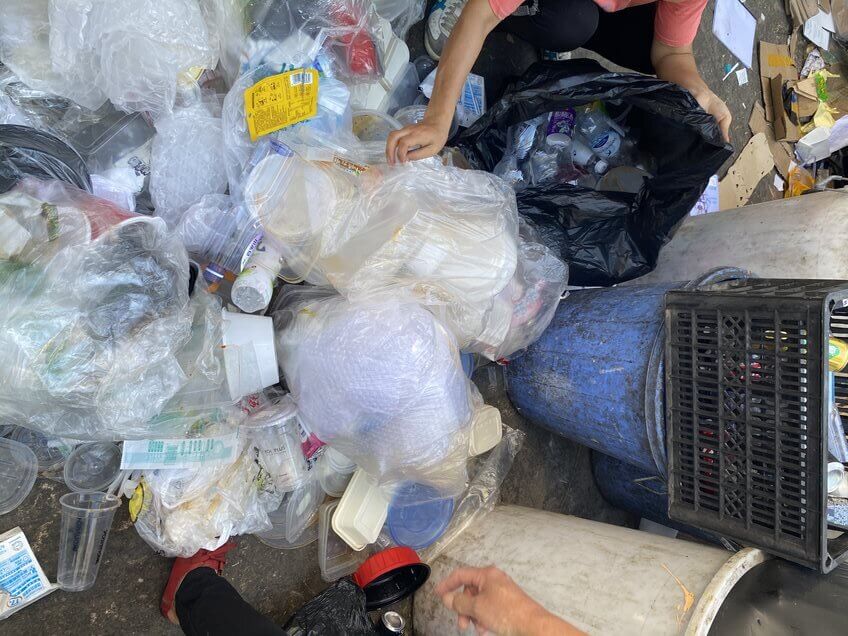
Surprisingly, in the other recycling point, recyclers there accept all kinds of plastic waste, including food containers and films. However, although the point is only 15 minutes-drive from office, it is still a little far away for recycling services. The transportation cost prohibits the recycler from coming to our office to pick up plastic waste once a week and is too far for Ayi to go there by electrical bike.
Thus, although we get to find a point that recycle all plastic, it is still urgent to raise awareness to more recycling points to enhance the convenience and expand covered regions to recycle low value plastic waste.
To be noted that the recycling price for plastic is now CNY 1 for kg. If recyclers can adopt to take in all plastic, Ayi can earn 0.74CNY per day, which is a 29% increase compared to her current income from recycling PET bottles, paper and cans.
